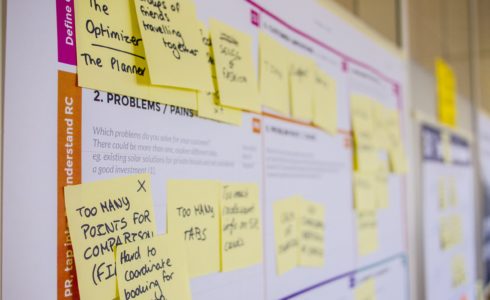Imagine you’re the manager of a highly skilled marketing team and you’re trying to create a big campaign for a new product. On your team you’ve got Anne, the deadline lover who thrives on pressure; Dave who needs to get work done early and stay on schedule to manage; Susan, the dominant personality, who needs her ideas to be heard, often at the expense of quieter members; and Will, Mr. Easygoing who seems to be in agreement with any member that talks.
They’re all skilled in what they do, but when you put them together … BAM! Things go sideways, communication breaks down and dysfunction sets in and leadership looks at you for an explanation.
You had all the project tasks identified and the right team members assigned to each. What went wrong? The answer lies in something simple and powerful that dictates the success or failure of any team: personality.
Our personalities, which psychologists say are set at a very early age and don’t really change throughout our lives, dictate our behaviors and how we react to other people and the world around us. People will behave in whatever way feels natural to them. We don’t always have the self-awareness to recognize how our personality and world view affect the way we relate to those we work with. But, if you, as a manager, understand your team’s behavioral makeup you can manage this and turn dysfunction into function.
If you understand the personality, or temperament, of your team members and they understand each other, there will be more effective communication and productivity between group members. Understanding temperament can help you build a team of people that will work well together and meet your objectives.
At McQuaig, we work with hundreds of companies around the world to help them make use of these scientific insights. Our system allows you to understand these temperamental differences and the impact they can have on team dynamics. This isn’t to say that you need a team with all the same behavioral types, but you do need to take different types into account.
Using Behavioral Insights to Build Strong Teams
The McQuaig System takes a three-pronged approach. We can assist with three important team building steps:
- Building a team
- Assessing their effectiveness
- Improving their effectiveness
Building an Effective Team
Building a team shares many similarities to recruiting and you can use a tool like The McQuaig System to create an effective internal team in much the same way you would use it to recruit a new employee.
When putting a team together, it’s important to understand the behavioral and developmental needs of each member in relation to the role they’ll take. The McQuaig Job Survey can be used to create a behavioral profile of a successful team member for each role – in other words, the traits someone will need to succeed in that role, including:
- Member strengths
- Member gaps
- How to manage these gaps and strengths
- Behavior-based questions to probe strengths and gaps.
Here’s a free tool based on the Job Survey that can be used to create this kind of profile.
Assessing Current or Potential Members
Through an assessment tool like McQuaig, you can discover the motivations and natural behaviors of potential or current team members and their level of fit with the benchmark you created for an ideal team member. Don’t use this as your sole selection method, but use it as a starting point to probe and understand if an employee has what it takes to carry out the role as you see it.
A great example of this is if you are looking to fill a project manager position within your team. You would likely want a driven, detail-oriented person in that position who will ensure objectives and deadlines are met. By defining those behaviors and comparing candidates to the target, you can identify a strong fit in the same way you would look for a skills fit.
You’ll also be able to better manage team members by understanding their temperament and how to best interact with them.
Assessing and Improving Team Effectiveness
If you’re dealing with improving the effectiveness of an existing team, you can use a tool like McQuaig to understand the different personality types involved; where potential conflict may arise and where they complement each other’s strengths. One of my favorite tools for team effectiveness is the Team Approach Report. What this will do is display a list of each team member’s attributes and areas for development in relation to teamwork. As a leader you can leverage this knowledge to decide whether the team will work well together or if it will lead to inefficiency and dysfunction. Sometimes sharing each team members’ personality type helps the team understand why people act the way they do, and what they can do to help each other succeed.
Back to the beginning
A person’s natural temperament is a strong force that will influence everything they do. Rather than try to fight a battle against it, equip yourself to win the war for productivity by using the insights available to you to form a super team and leverage the natural temperament of each member.
If you’d like to learn more about the role of personality in team building, ask us about our “Maximizing Team Effectiveness with the McQuaig System” seminar, or speak to a consultant about a free trial.
What steps do you take to build an effective team?
Image courtesy of Flickr CC and 드림포유
{{cta(‘572503bb-c7f2-40f1-8c37-eec0400e3292′,’justifyleft’)}}








